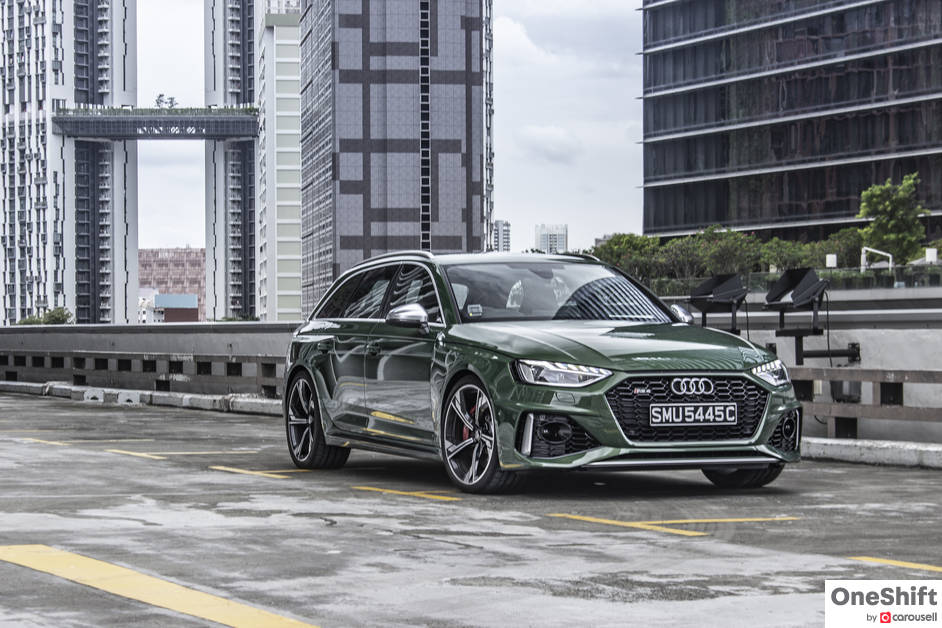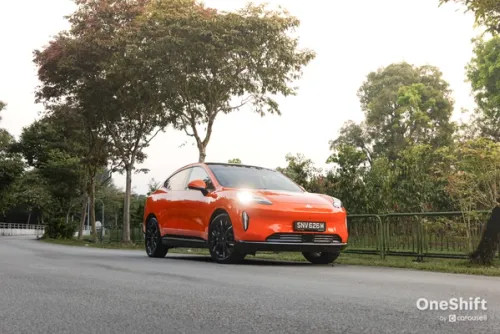Road Safety: Increase Speed Limits on Expressways to Reduce Accidents
Road safely issues have been more widely discussed topic in recent years, with many more road incidents caught on car dashcams and posted on social media. Can Singaporean motorists be trusted with the discretion that is required in some scenarios? - Or should we be seeking to improve road safety at a more regulatory and institutionalised level?

The state of road safety in Singapore has come under public scrutiny more frequently in recent years, coinciding with the increased profile of user-contributed pages and sites featuring accidents, law-breaking drivers, rude drivers, and near miss videos taken from dashcams the country over. Apart from being entertaining for the most part, these videos also highlight the dismal state of road safety in Singapore, which largely comes down to the poor, the reckless, and the downright oblivious behaviour of some of Singapore’s motorists (cars and bikers alike). The comments section of these pages are a goldmine, and often lend an opinion about which party involved in the incident is at fault. Other times, the comments also include sweeping generalisations, and the odd and irrelevant swipe at the government (ahh… Singaporeans…)

What is rare though, are comments about the general state of Singapore’s road safety system, and how we can begin to tackle road safety issues at a much more institutionalised or infrastructural level. After all, I think most would agree that the discretionary aspect of motoring on Singapore roads is often lost on its users, and that common sense, is not so common after all. If we can’t be trusted to exercise discretion, then perhaps where possible, the element of discretion is removed from our decision making process. In some ways, we have already started to see this in action, with the conversion of discretionary right turns into clear cut green or red turning arrows seen at many junctions across Singapore. I applaud this move, as it has a sweeping and immediate impact on road safety, and is a subtle way of our government telling us (both motorists and pedestrians) that we can’t be trusted to coexist. Apart from city streets, most of us spend plenty of our commute on expressways around Singapore, where perhaps a similar approach of enforcing safety through a change in regulations and infrastructure can help to reduce the amount of accidents on our roads. One major suggestion that has emerged from studies conducted in a few western countries suggest that increasing the speed limits on expressways can actually help to reduce the number of accidents. We look at why this suggestion makes sense - or not.

It is common knowledge that speed limits are enacted with the intention of keeping our roads safer. However, there has been more and more research in recent years that indicate otherwise, and that an increased speed limit might actually play a big part in decreasing the number of accidents on high speed autoways such as expressways and highways. The backing theory here is that the rate of accidents happening did not increase with higher speeds, but the rate of accidents did increase when there were larger variances in speeds among cars on the same stretch of road (this is why cycling on the road is so dangerous - but more on that later). Essentially - accidents happen when there is a great difference in traveling speed between the faster and slower vehicles on the road. It is also worth noting that supporting research shows that when a speed limit is implemented, 70% of road users will subconsciously travel around or slightly below the speed limit, 10% will be made up of slow moving vehicles, and the remaining 20% would travel at whatever speed they felt comfortable with along that particular stretch of road. This means that realistically, it is easier to get the majority to drive faster with an increased speed limit, thus decreasing speed variance on the road, than to get the outliers to keep to an enforced speed limit. It was also noted that when speed limits were increased, lane changes between vehicles decreased drastically So for example, if we increase the speed limit on a 90km/h expressway to 100km/h there is the hypothetical possibility that the 70% will subconsciously drive at speeds closer to 100km/h, while the 20% may not necessarily drive faster, but rather continue driving at what they are comfortable doing, which may well be in the vicinity of 100km/h as well. In an ideal situation, speed variance is decreased along with the rate of accidents, and the average road user is none the wiser, oblivious to the manipulation behind the scenes - Sounds like win to me. It is important to note however, that in these studies, although the number of accidents decreased with the decrease in speed variance, the relative severity of the small amount of accidents that did happen was greater. On the other spectrum, it was also recommended that there be a minimum speed limit for slow moving vehicles with the objective of reducing speed variance as well. In countries like the United States, it is not uncommon for drivers to be pulled over by the Police for driving too slowly. They will pull you over and urge you to keep up to speed with the rest of the vehicles, or move off the highway onto regular streets instead.

Another facet of consideration is of how speed impacts the frequency of lane changes. We can all assume that lane changes are a contributing factor to accidents, and it seems that with increased speed limits, the frequency of lane changes decreases. This is largely due to the concept that the 20% are less likely to jump between lanes to get away from the slower travelling 70%. If they are of similar speed, there would be a decreased need for the faster drivers to change lanes and overtake - and even if they did, would face decreased risk of an accident due to lower speed variance. The topic of lane changes is perhaps also felt more dramatically on the other end of the speed spectrum, where on a 3 lane expressway, it is far more common to see cars changing lanes from lane 3 to lane 2 in an attempt to overtake the extremely slow moving vehicles on the left. To make matters worse, the heavy and slow moving vehicles are also often caught driving on lane 2, which causes even cars within the speed limit to change lanes to either lane 1 on the right or lane 3 on the left (both scenarios represent increased risk of accidents). Long story short - More speed variance equals more lane changes. More lane changes equals higher risk of accidents.

We’ve already established that the 20% will travel at whatever speed they feel comfortable with along a particular stretch of road. This indicates that there is an element of control that can be exercised over such drivers - and that is the perceived comfort of travelling at a certain speed along a particular stretch of road. To put things simply - If we wanted these drivers to go slower, could we perhaps make the road conditions less desirable for them to speed? Make the expressway more windy perhaps? Make the road surface rougher and bumpier than needed perhaps? It’s an interesting thought, and if we consider a completely straight and smooth expressway, with a speed limit of 90km/h, what are the odds that this speed limit is adhered to? It's almost like forcing an agenda that is never going to materialise, only to lead to increased speed variances between the 20% who will do what they want, and the 70% who will subconsciously follow the speed limit. In Singapore, our speed controls function somewhat on a “need to manage” basis, where speed cameras are placed at specific points along our expressways to ensure that people aren’t speeding through a particular section. While this works to an extent, Singaporeans are often miffed and put off by the authorities controlling their behaviour in such obvious ways. In fact, many believe that speed cameras are simply there as a money-making mechanism to ensure that the “quota” of fines are met. Perhaps what is needed are more subtle controls and ones that make an already very agitated population feel like they’ve been given additional elements of freedom. Imagine the headlines tomorrow going “LTA increases speed limit on all expressways”. - People would love it. Little would they know that they are actually being manipulated more so than ever in the name of increased road safety. Perhaps, as Aussie indie-rock band, Tame Impala, puts it, “The less I know the better” - we could all do with a bit of subtle manipulation in the name of increased road safety.
Credits:


Get the Best Price for your used car
from 500+ dealers in 24 hours

- Convenient and Hassle-Free
- Consumer Protection
Transparent Process
With No Obligation








